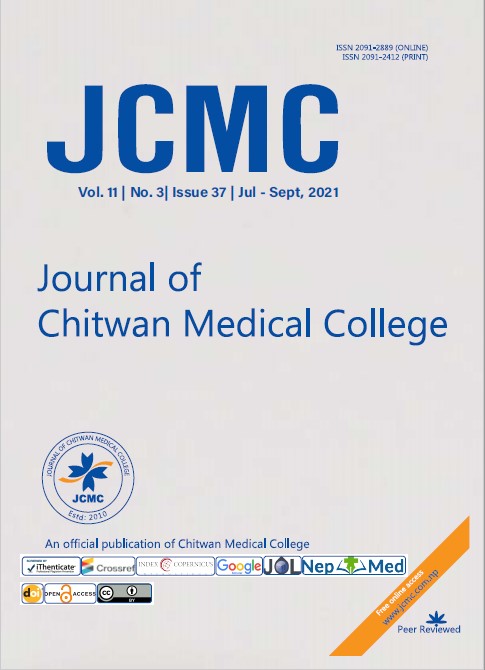Study of cephalic index in newborns of Kavre region
Keywords:
Anatomy; Cephalometry; Head; Nepal; Newborn.Abstract
Background: The cephalometry of newborn within first few days is important for assessment of health status, neonatal death, growth and development. The objective of the study is to provide a baseline data for cephalic index and to observe sexual dimorphism.
Methods: The present study was cross sectional type. It consisted of 138(72 males, 66 females) healthy neonates born in Dhulikhel hospital via vaginal delivery. It was conducted from June 2019 to March 2020 after receiving ethical approval. The cephalic index was derived after measuring length and breadth of head. The collected data was entered in excel and analyzed with SPSS (16.0).
Results: The conducted study revealed the overall cephalic index as 86.51±4.95 and head circumference to be 336.05±13.87 mm. The values of head circumference and head length of males were higher than that of females. The head breadth of males was found to be significantly higher than that of females. The most common type of head type was hyperbrachycephalic with prevalence of 37.7% (40.3% males and 34.8% females).
Conclusions: This study concluded that the majority type of head was hyperbrachycephalic. The length, breadth and circumference of head values were higher in males than that of females.
Downloads
Downloads
Published
How to Cite
Issue
Section
License
Copyright (c) 2021 Sunima Maskey, Dil Islam MAnsur, Pragya Shrestha, Sheprala Shrestha, Mukta Singh Bhandari

This work is licensed under a Creative Commons Attribution 4.0 International License.




